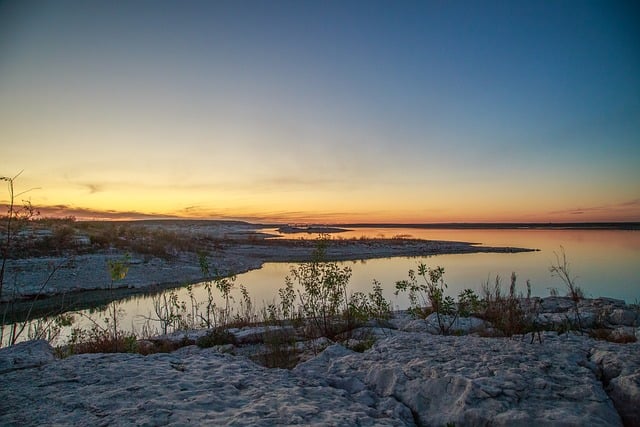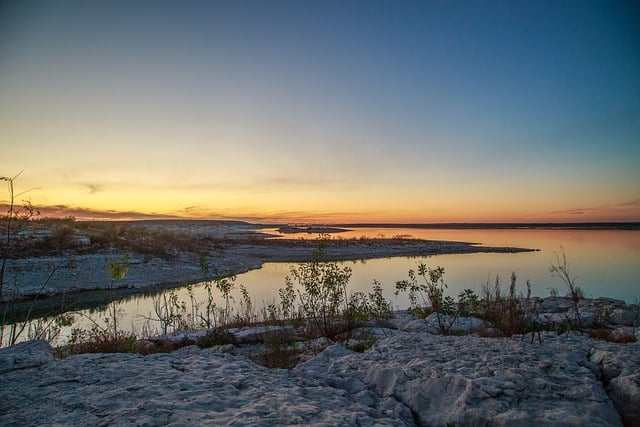
Flashlights for outdoor guides and instructors are essential tools for ensuring safety and visibility during trail excursions, especially under twilight or night conditions. The best flashlights offer robust construction, high-quality LEDs, water resistance, impact resistance, and multiple light modes including bright, dimmed, strobe, and SOS settings to meet various needs from signaling to inspecting environments. They should be ergonomic for extended use, durable enough to withstand drops and moisture, and designed for one-handed operation. Professionals leading outdoor groups must be well-versed in using these flashlights effectively, which involves mastering adjustable beam angles, battery preservation, and emergency signaling techniques through regular training. By having such flashlights and the necessary skills to use them, guides can manage their groups safely and efficiently across diverse terrains and conditions, providing a secure and enjoyable outdoor experience. Flashlights for Outdoor Guides and Instructors are not just tools but critical partners in trail navigation and safety management.
When venturing into the great outdoors, safety is paramount, especially for trail groups. As darkness falls, reliable illumination becomes crucial. This article delves into the critical role of flashlights for outdoor guides and instructors, emphasizing their significance in ensuring group safety on trails. We’ll explore key features to prioritize when selecting the best flashlights, share best practices for their deployment, and discuss techniques to enhance visibility. Additionally, we’ll cover the strategic placement of these lighting tools within group gear for peak efficacy, the impact of flashlight choice on overall trail safety and efficiency, and the importance of training to sharpen guide skills in flashlight usage. Join us as we illuminate the path to a safer, more confident outdoor journey for both guides and their groups.
- Understanding the Essential Role of Flashlights in Outdoor Group Safety
- Key Features to Look for in a Flashlight for Trail Guides and Instructors
- Best Practices for Using Flashlights on Multi-Day Trails
- Strategic Placement of Flashlights Within Group Gear for Maximum Efficacy
- Illuminating the Path Ahead: Flashlight Techniques for Enhanced Visibility
- The Impact of Flashlight Selection on Trail Safety and Efficiency
- Training and Drills to Sharpen Flashlight Usage Skills Among Outdoor Guides
Understanding the Essential Role of Flashlights in Outdoor Group Safety

When embarking on trail excursions, ensuring group safety is paramount, and flashlights for outdoor guides and instructors play a pivotal role in this endeavor. A reliable light source becomes essential as it can significantly enhance visibility during dusk or nighttime activities. Flashlights are instrumental in guiding groups through challenging terrains, identifying potential hazards on the path ahead, and ensuring that no member is left behind or wanders off course. They also serve as signaling devices in case of emergencies, helping to draw attention or illuminate signals for rescue operations. For outdoor guides and instructors, flashlights are not merely tools but integral components of their safety kits. Their luminescent beams can turn a potentially hazardous situation into a navigable one, offering peace of mind and the ability to manage groups effectively in varied lighting conditions. Selecting flashlights for outdoor guides and instructors that feature durable designs, long battery life, and versatile lighting modes (high, low, and strobe settings) will further enhance their effectiveness as safety beacons on the trails. Proper training in the use of these devices is also crucial to maximize their benefits and ensure that every member of the group can rely on the light’s guiding presence.
Key Features to Look for in a Flashlight for Trail Guides and Instructors

When selecting a flashlight for outdoor guides and instructors who lead groups on trails, durability and reliability are paramount. A high-quality flashlight must withstand the rigors of outdoor conditions, including moisture, dust, and impacts. Look for flashlights constructed with aircraft-grade aluminum or similar robust materials that can endure the elements without failure. Additionally, these flashlights should be waterproof, featuring an IPX rating of at least 7 or higher to ensure they function in wet environments.
The beam characteristics are equally crucial. A powerful LED source is essential for lighting up distant paths or trail markers, so choose a model with a high lumen output. For versatility, consider flashlights that offer multiple light modes, including a bright spotlight for long-distance visibility and a diffused setting for nearby tasks. A long battery life is also a significant feature, as it reduces the frequency of battery changes or the need for external power sources during extended excursions. Flashlights designed with a rechargeable battery system are particularly advantageous in this context. Furthermore, features like adjustable focus and a sturdy, ergonomic design enhance the user experience by adapting to various tasks and conditions encountered on trails, ensuring that flashlights for outdoor guides and instructors are both practical and reliable tools for group safety and effective navigation.
Best Practices for Using Flashlights on Multi-Day Trails

When embarking on multi-day trail excursions, outdoor guides and instructors play a pivotal role in ensuring group safety, with flashlights being an indispensable tool. The choice of flashlights for outdoor guides and instructors should prioritize durability, reliability, and brightness. Opt for models that offer adjustable beam intensities; this allows for versatile lighting conditions. A multi-mode flashlight can navigate from wide, ambient light settings to focused beams needed for close-up tasks or signaling.
Safety protocols must include regular checks of each flashlight’s battery life and overall condition before and during the trail journey. Guides should instruct group members on best practices such as maintaining a consistent grip to avoid accidental drops and ensuring the flashlight’s lens is clear of debris that could diffuse the light. Additionally, establishing a routine for conserving power, like using the lowest setting when full illumination isn’t necessary, can extend battery life and prevent unexpected darkness during critical moments on the trail. Outdoor guides and instructors should also train their groups on emergency signaling techniques with flashlights, which could be vital in situations where assistance is required. Proper use of flashlights is not just about visibility but also about preparedness and safety for the entire group throughout the trails’ duration.
Strategic Placement of Flashlights Within Group Gear for Maximum Efficacy

When embarking on trail excursions, outdoor guides and instructors are tasked with ensuring the safety and preparedness of their groups. A critical element in this responsibility is the strategic placement of flashlights within the group’s gear. Flashlights for outdoor guides and instructors must be readily accessible yet packed to prevent accidental activation that could drain batteries. They should be positioned at a height reachable by all members, ensuring everyone can retrieve them easily when darkness falls or visibility wanes. The beam intensity and range of high-quality flashlights can illuminate the path ahead, ward off wildlife, or signal for help if necessary. Guides should consider carrying a variety of flashlight types—some with wide beams for group gatherings and others with focused beams for scanning the environment. Additionally, the use of LED technology in these flashlights offers both longevity and brightness, making them an indispensable tool for any outdoor excursion. By placing flashlights at strategic points within the group’s gear, guides can enhance safety, maintain morale, and effectively manage the group’s navigation through various trail conditions, from dense forests to open meadows. This thoughtful preparation allows for a seamless transition from daylight activities to safe nocturnal travel, ensuring that the guide’s leadership is not hindered by sudden darkness.
Illuminating the Path Ahead: Flashlight Techniques for Enhanced Visibility

When venturing into the great outdoors with a group, safety and visibility are paramount, especially when traversing trails at dusk or under the cover of darkness. Flashlights for outdoor guides and instructors play a crucial role in ensuring that every step taken is safe and well-lit. The technique with which a flashlight is used can significantly enhance or hinder the group’s ability to see their surroundings clearly. A skilled guide employs various flashlight techniques to optimize visibility for both themselves and their charges. For instance, instead of focusing on a single path, strategically positioned lights can illuminate various sections of the trail, creating a broader field of vision that helps prevent obstacles from going unnoticed. Additionally, using flashlights with adjustable beams allows guides to switch between focused light for navigating specific areas and wider dispersions for situational awareness on more open trails.
The choice of flashlight is equally important as the technique used. Outdoor guides and instructors should opt for flashlights designed specifically for rugged use, featuring durability, high-quality LEDs, and robust construction to withstand the elements. These flashlights often come with multiple settings, including bright, dimmed, strobe, and SOS modes, which are invaluable tools in diverse situations, from signaling for help to conserving battery life when navigating longer trails. Moreover, incorporating red or green LEDs can preserve night vision while providing illumination, a critical feature when maintaining natural darkness adaptation is necessary. By mastering both the technical and tactical aspects of flashlight usage, outdoor guides and instructors can significantly enhance group safety on trails, ensuring a safe and enjoyable experience for all participants.
The Impact of Flashlight Selection on Trail Safety and Efficiency

When embarking on a trail with a group, the selection of flashlights for outdoor guides and instructors is pivotal in ensuring both safety and efficiency. A reliable flashlight serves as an essential tool, particularly when navigating through unpredictable terrain at dusk or during nighttime excursions. The luminosity, battery life, and durability of a flashlight can significantly influence the success and safety of the expedition. Guides must consider beam intensity to illuminate pathways ahead while also having variable settings for different lighting needs, such as distant area inspection or close-up tasks. Additionally, water resistance and impact resistance are critical features, as trails can often be muddy or have rocky surfaces that pose risks to both the users and their equipment.
For instructors leading groups on trails, the selection of flashlights extends beyond mere visibility. The ability to signal for help in an emergency is a silent but vital aspect of any outdoor lighting arsenal. Features such as strobe functions can be used to attract attention and aid in rescuing operations. Furthermore, the ergonomic design of the flashlight, including its weight distribution and grip texture, impacts user fatigue and effectiveness over extended periods. Outdoor guides and instructors should prioritize flashlights that offer a balance between brightness, battery longevity, and versatility in their design. This ensures that they can guide groups with confidence, knowing that their lighting equipment is not only a beacon of light but also a reliable companion throughout the journey.
Training and Drills to Sharpen Flashlight Usage Skills Among Outdoor Guides

Outdoor guides and instructors play a pivotal role in ensuring the safety and efficiency of group activities, especially during evening excursions or unforeseen low-light conditions. To enhance their preparedness and proficiency, it is essential for these professionals to engage in regular training and drills focused on flashlight usage. These sessions can include exercises that simulate various scenarios where a flashlight becomes an indispensable tool, such as navigating trails in darkness or signaling for help. By incorporating flashlights for outdoor guides and instructors into their skill set, they can not only improve their own safety but also teach group members effective techniques for using these devices.
Training programs should emphasize the selection of appropriate flashlight models that offer durability, reliability, and functionality suitable for rugged terrain and harsh environments. The drills themselves should cover handling, battery conservation, beam angle utilization, and emergency signaling. Flashlights for outdoor guides and instructors must be versatile enough to operate with one hand, have adjustable intensity settings, and feature a robust design that can withstand drops or exposure to moisture. Through consistent practice and skill development, outdoor guides and instructors will be better equipped to handle unexpected situations, ensuring the safety and well-being of their groups on trails.
When venturing into the wilderness with a group, safety and preparedness are paramount. As outlined in this article, flashlights for outdoor guides and instructors play a critical role in ensuring trail navigation is both safe and efficient. Selecting the right flashlight, understanding its features, and employing best practices for use on multi-day excursions can significantly enhance visibility and group dynamics. Strategic placement of these lights within shared gear ensures all members have access when needed. By mastering flashlight techniques and incorporating training drills into guide skillsets, the path ahead becomes clearer and the risks of navigating in darkness are mitigated. In conclusion, investing in high-quality flashlights for outdoor guides and instructors is not just a best practice—it’s an indispensable tool for maintaining safety and efficacy on trails.







